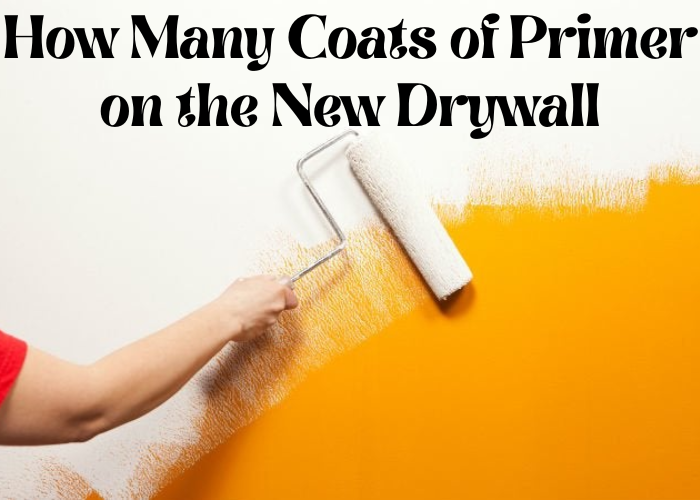Whether you are a professional contractor or a DIY enthusiast, when you are working with drywall, you need to know how many coats of primer to apply. Applying too few coats can result in a weaker finished product while applying too many can lead to unnecessary waste and time. In this article, we will help you determine the right number of coats for your project.
Types of Primer
A primer is a type of paint that is used as a base coat, usually before painting new drywall. Primers are designed to provide better adhesion, density, and opacity than paint alone. They can also help to hide imperfections on the surface and create a more uniform appearance. There are two main types of primer: oil-based and water-based. Oil-based primers are generally more durable and longer lasting than water-based primers, but they can be more difficult to work with. Water-based primers are easier to apply and clean up, but they may not provide the same level of coverage or durability as oil-based primers. When choosing a primer, it is important to consider the project at hand and select the type of primer that will best suit your needs.
How to Apply Primer
Applying primer is an important part of painting any new drywall. Primer helps to seal the surface and provides a smooth base for the paint to adhere to. It is also important to use a primer that is compatible with the type of paint you will be using. For example, if you are using latex paint, you should use a latex-based primer. To apply primer, first, make sure that the surface is clean and free of any dust or debris. Next, apply a thin layer of primer evenly across the surface. Once the first coat is dry, apply a second thin coat. You may need to apply additional coats depending on the desired results. Finally, allow the primer to dry completely before applying paint.
Number of Coats of Primer Necessary
When painting new drywall, it is important to use a primer before applying the paint. Primer helps to create a smooth surface for the paint and also helps to fill in any imperfections in the drywall. The number of coats of primer necessary will depend on the type of primer used and the type of paint being applied. Generally, two coats of primer are sufficient when using a high-quality latex primer. However, if you are using an oil-based primer, you may need to apply three or more coats. In addition, if you are painting over existing paint, you may only need to apply one coat of primer. Regardless of the number of coats needed, it is important to allow each coat of primer to dry completely before applying the next coat.
Tips for Applying Primer
Before painting any new wall, it is essential to apply a base coat of primer. This will help the paint to adhere better to the surface, resulting in a smoother and more professional finish. When priming a new wall, there are a few things to keep in mind. First, be sure to use a primer that is specifically designed for use on drywall. Second, always apply at least two coats of primer, letting each coat dry completely before applying the next. Finally, don’t be afraid to sand down the surface after the primer has dried. This will help to create an even surface that is ready for paint. By following these simple tips, you can ensure that your next painting project turns out looking its best.
When to use a sealant
A sealant is a product that is used to coat surfaces in order to protect them from damage. Sealants are often used on new construction, such as buildings or roads. They can also be used on existing structures, such as bridges or dams. In addition, sealants are often used on porous materials, such as concrete or stone. Sealants can be applied using a brush, roller, or sprayer. They can also be applied by dipping the object into the sealant. Once the sealant has been applied, it will need to be allowed to dry before it can be used. Sealants are an important part of protecting surfaces from the elements and should be used whenever possible.
How to Clean Up After Priming
After you have put coats of primer on new drywall, it is important to clean up any spills or smears before they have a chance to dry. Otherwise, you will be left with a hard-to-clean mess that can affect the paint job. The best way to clean up wet primer is with a damp rag. First, blot up as much of the primer as possible. Then, use a circular motion to wipe away the remainder of the primer. If there are any stubborn spots, you can use a mild detergent or rubbing alcohol to remove them. Once you have cleaned up the wet primer, be sure to dispose of the rag in a safe manner. If you leave it lying around, it may become a fire hazard.
Conclusion
So, how many coats of primer should you use on new drywall? The answer is it depends. If you are painting over the primer with a dark color, then you will need more than one coat to cover up the white primer. However, if you are using light-colored paint or just want to seal the surface, one coat may be enough. No matter what, always do a test patch to see how the paint looks and feels before priming the entire wall.
